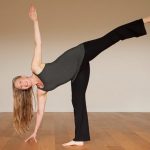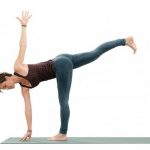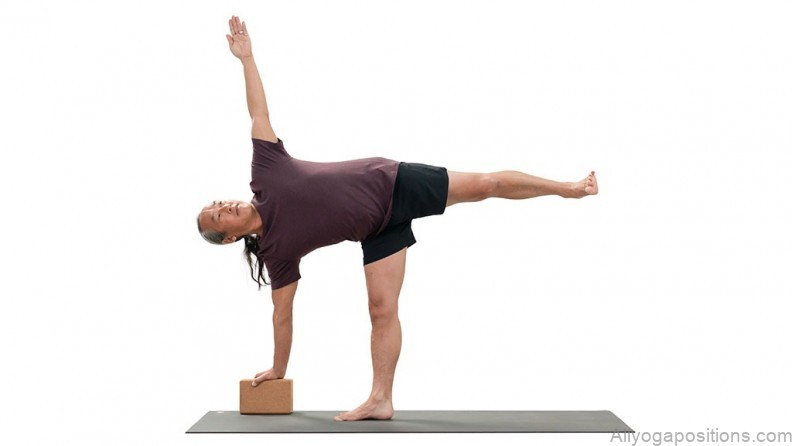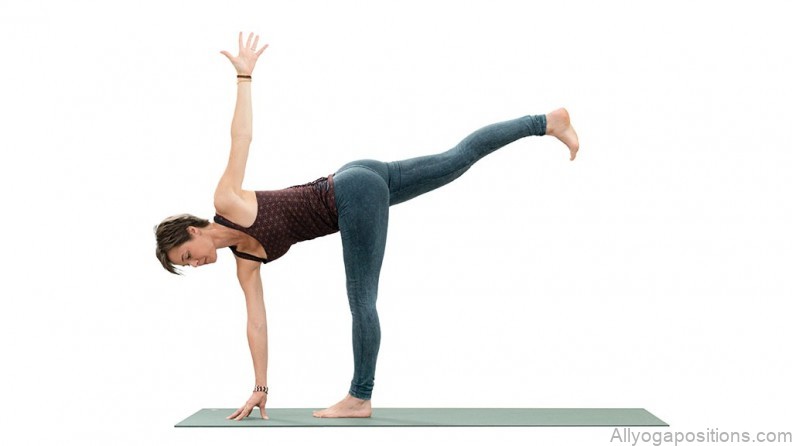Ardha Chandrasana, also known as Half Moon Pose, is a beautiful and challenging yoga posture that provides numerous physical and mental benefits. The name “Ardha Chandrasana” is derived from the Sanskrit words “ardha” which means half, “chandra” which means moon, and “asana” which means posture. This pose requires balance, strength, and flexibility, and is an excellent way to improve your overall yoga practice. In this article, we will explore the benefits, instructions, modifications, and precautions of Ardha Chandrasana, as well as how to incorporate it into your yoga practice.
Benefits of Ardha Chandrasana
Ardha Chandrasana provides many benefits for the mind and body. Some of the benefits include:
1. Improves balance and coordination
Ardha Chandrasana is a balancing posture that requires concentration and focus. Practicing this pose regularly can improve your balance and coordination, which can be useful in other areas of your life.
Ardha Chandrasana: A Comprehensive Guide to Half Moon Pose Photo Gallery
2. Increases strength and flexibility
This posture strengthens the legs, hips, and core muscles. It also stretches the hamstrings, calves, and spine, which can help improve flexibility.
3. Stimulates digestion and metabolism
The twisting motion of Ardha Chandrasana can stimulate the digestive organs, improving digestion and metabolism. This can also help with detoxification.
4. Relieves stress and anxiety
Ardha Chandrasana is a calming posture that can help reduce stress and anxiety. Practicing this pose can help you feel more grounded and centered.
How to do Ardha Chandrasana
Here are the step-by-step instructions for practicing Ardha Chandrasana:
- Begin in Triangle Pose (Trikonasana) with your right foot forward.
- Place your right hand on your hip and shift your weight onto your right foot.
- Slowly lift your left leg off the ground, keeping it straight and strong.
- Rotate your left hip and foot inward, so your left toes are pointing towards the ground.
- Extend your left arm up towards the ceiling, aligning your shoulders and hips.
- Gaze up towards your left hand.
- Hold the pose for 5-10 breaths.
- To release, slowly lower your left foot back to the ground and come back to Triangle Pose.
- Repeat on the other side.
Modifications and Variations of Ardha Chandrasana
There are many modifications and variations of Ardha Chandrasana that can make the pose more accessible or challenging depending on your level of practice. Here are a few:
1. Using a block
If you have trouble reaching the ground with your hand or keeping your balance, you can place a block under your hand for support.
2. Using a wall
If you’re new to this pose, or if you have trouble balancing, you can practice with your back against a wall. This will give you more stability and support.
3. Revolved Half Moon Pose
This variation adds a twist to the pose, which can help improve digestion and detoxification. To practice Revolved Half Moon Pose, start in Half Moon Pose and bring your left hand to your right hip. Then, reach your left hand towards the floor, twisting your torso to the right. Your right arm can reach towards the ceiling or wrap around your back.
4. Half Moon Pose with a Bound Revolved Triangle
This variation adds an arm bind to the Revolved Half Moon Pose. Start in Revolved Half Moon Pose and bring your right hand to your left hip. Reach your left arm underneath your right thigh and clasp your hands together behind your back.
Precautions and Contraindications for Ardha Chandrasana
While Ardha Chandrasana can be a beneficial posture, there are some precautions and contraindications you should be aware of before practicing:
1. Avoid if you have low blood pressure or headaches
Ardha Chandrasana can cause a temporary increase in blood pressure, so if you have low blood pressure or are prone to headaches, it’s best to avoid this posture.
2. Avoid if you have neck, shoulder, or hip injuries
This pose puts pressure on the neck, shoulders, and hips, so if you have any injuries in these areas, it’s best to avoid or modify the posture.
3. Modify if you have trouble with balance
If you have trouble with balance, it’s important to modify the pose by using a wall or a block for support.
Incorporating Ardha Chandrasana into Your Yoga Practice
Ardha Chandrasana can be incorporated into your yoga practice in several ways. Here are a few suggestions:
1. Warm-up
Before practicing Ardha Chandrasana, it’s important to warm up your body with a few rounds of Sun Salutations or other standing postures like Warrior II or Triangle Pose.
2. Stand-alone posture
Ardha Chandrasana can be practiced on its own as a balancing posture, or as part of a sequence that includes other balancing postures like Tree Pose or Warrior III.
3. Cool-down
After practicing Ardha Chandrasana, it’s important to cool down your body with a few restorative postures like Child’s Pose or Pigeon Pose.
4. Flow sequence
Ardha Chandrasana can be incorporated into a flow sequence that includes other standing and balancing postures, like a Vinyasa flow.
5. Partner practice
Ardha Chandrasana can be practiced with a partner for added support and balance. Stand facing each other, holding hands, and help each other find balance in the pose.
In conclusion, Ardha Chandrasana is a beautiful and challenging yoga posture that provides numerous physical and mental benefits. Practicing this pose regularly can improve your balance, strength, flexibility, digestion, and reduce stress and anxiety. Remember to listen to your body and modify or avoid the posture if you have any injuries or health conditions. With practice, patience, and dedication, you can incorporate Ardha Chandrasana into your yoga practice and experience its many benefits.
Table of Contents
Maybe You Like Them Too
- Mastering Virabhadrasana A: The Warrior Pose of Empowerment
- Embracing the Essence of Wide Legged Forward Bend: A Deep Dive
- Unlocking the Power of Prasarita Padottanasana: The Wide-Legged Forward Bend
- The Power and Elegance of the Wide Legged Forward Bend II Yoga Pose
- Mastering the Warrior II Pose: A Deep Dive into Its Benefits and Techniques






